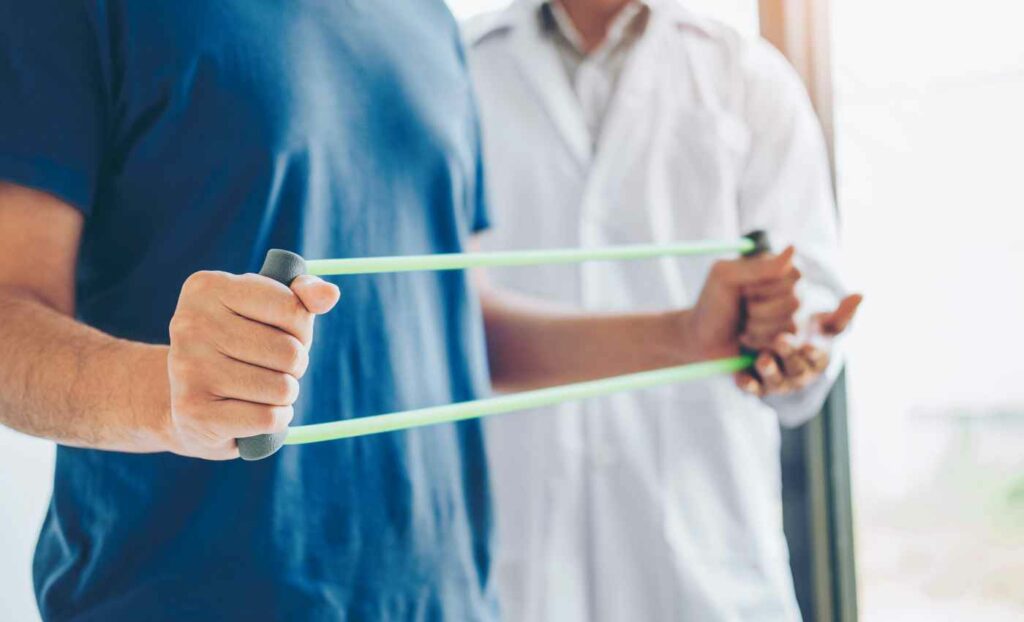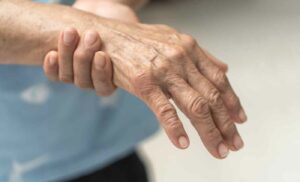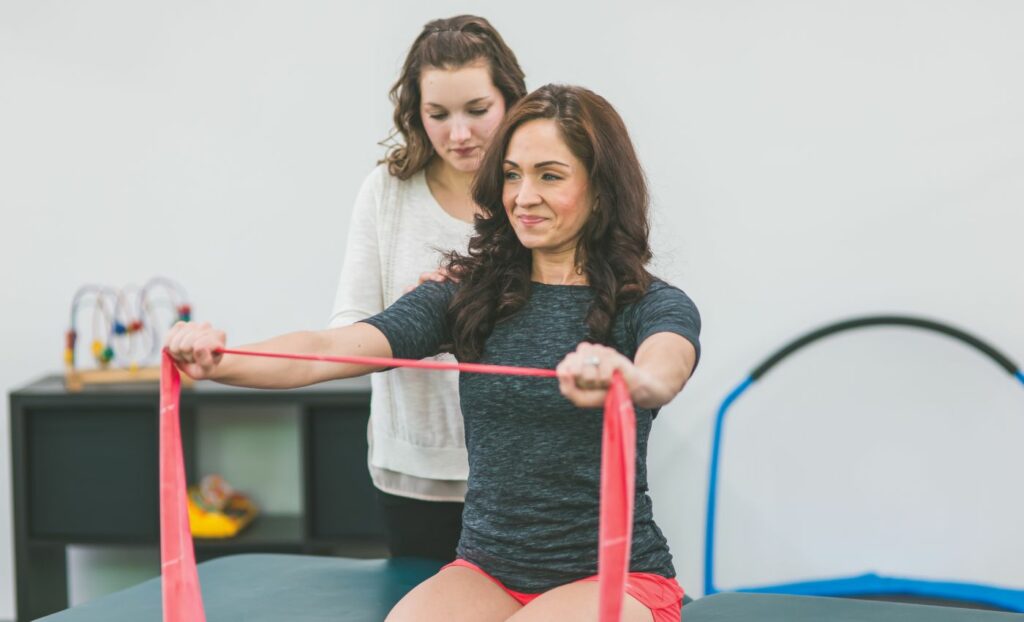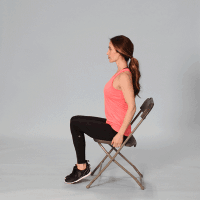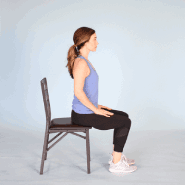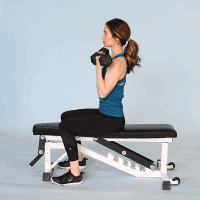Imagine waking up one morning and your leg feels heavy and you find yourself unable to move. Some of you won’t have to imagine because this is a reality for those suffering from Guillain-Barré Syndrome (GBS). GBS is a neurological, autoimmune condition that can profoundly impact someone’s quality of life. However, there is hope and a vital ally in this journey is physical therapy.
In this blog, we’ll explore the profound impact of physical therapy on individuals grappling with Guillain Barré Syndrome, shedding light on how it can help them regain mobility, strength, and ultimately, their lives.
Contents
Understanding Guillain Barré Syndrome
Guillain-Barré Syndrome (GBS) is a rare and potentially life-threatening neurological disorder that affects the peripheral nervous system the network of nerves outside the brain and spinal cord. However, it can develop as a result of an abnormal immune response triggered by various factors. GBS is characterized by the body’s immune system mistakenly attacking the protective covering around nerve fibers, as well as the nerve cells themselves. This immune response leads to inflammation and damage to the nerves, disrupting the normal communication between the brain and muscles. As a result, individuals with GBS experience muscle weakness, numbness, and often paralysis.
The symptoms of GBS typically start in the legs and occasionally affect the arms as well. In severe cases, GBS can lead to almost complete muscle paralysis, making even basic activities like breathing and swallowing difficult. This rapid progression of symptoms is a hallmark of the condition and distinguishes it from other neurological disorders.
Causes of Guillain Barré Syndrome
Guillain-Barré Syndrome (GBS) is believed to be triggered by an abnormal immune response, often following an infection or other medical event. While the exact cause of GBS remains uncertain, it could develop due to several common factors. These include:
- Infections: GBS often follows an infection, typically caused by viruses or bacteria. Common infections linked to GBS include:
- Campylobacter jejuni: This bacterium, commonly found in contaminated food or water, is one of the most frequent triggers of GBS.
- Epstein-Barr virus (EBV): Known for causing infectious mononucleosis, EBV infection can precede GBS.
- Influenza: Various strains of the influenza virus, including H1N1, have been associated with GBS cases.
- Zika virus: In some regions, outbreaks of Zika virus infection have coincided with an increase in GBS cases.
- Hepatitis A, B, and C: Hepatitis infections can occasionally lead to GBS.
- Vaccinations: While extremely rare, some vaccines have been linked to GBS. The risk of GBS after vaccination is generally low and vaccination-related GBS cases are closely monitored, and vaccines undergo rigorous safety testing.
- Other Factors: GBS can occasionally develop without a clear preceding infection or vaccination. Some additional factors that may increase the risk of GBS include:
- Age: GBS can affect individuals of all ages, but it is more common in adults and older individuals.
- Gender: Men appear to be somewhat more susceptible to GBS than women.
- Immune System Abnormalities: People with certain immune system disorders or conditions may have a higher risk of developing GBS.
It’s crucial to note that while these factors can lead to GBS, not everyone who experiences an infection or vaccination will develop the syndrome.
Managing Pain In Guillain-Barré Syndrome: Strategies For Relief
Pain and discomfort are common complaints among individuals with GBS, and managing them effectively is an important aspect of the overall care and rehabilitation process. Some common pain management strategies include:
- Medications: Over-the-counter pain relievers such as Tylenol or nonsteroidal anti-inflammatory drugs (NSAIDs) such as ibuprofen can help manage mild to moderate pain.
- Prescription Medications: In cases of severe pain, neuropathic pain, or muscle spasms, healthcare providers may prescribe stronger medications like opioids or anti-seizure drugs (anticonvulsants).
- Physical Therapy: Physical therapists can use various techniques to help alleviate pain and discomfort, such as manual therapy, stretching, and range of motion exercises. They can also teach you exercises and techniques to manage pain at home.
- Heat and Cold Therapy: Applying heat (e.g., warm towels or heating pads) or cold (e.g., ice packs) to painful areas can provide relief. Experiment with both to see which works best for you.
- Transcutaneous Electrical Nerve Stimulation (TENS): TENS units deliver small electrical currents to the skin, which can help reduce pain and discomfort by interfering with pain signal transmission.
- Massage and Myofascial Release: Gentle massage and myofascial release techniques can help relax tight muscles and also alleviate muscle pain.
- Relaxation and Stress Reduction: Stress and anxiety can exacerbate pain. Practices like deep breathing, meditation, and mindfulness can help manage stress and reduce pain perception.
- Supportive Devices: Orthotic devices, such as braces or splints, may be recommended to support weakened muscles and alleviate joint pain.
- Occupational Therapy: Occupational therapists can provide strategies and adaptive techniques to minimize discomfort during daily activities and improve overall quality of life.
- Nutrition and Hydration: Proper nutrition and hydration can aid in muscle recovery and reduce the risk of muscle cramps.
The Role of Physical Therapy in Guillain Barré Syndrome Recovery
Physical therapy can help Guillain barré Syndrome patients regain their strength, mobility, and independence.
Assessment and Personalized Plans
Physical therapy for GBS begins with a comprehensive assessment of the patient’s physical condition. This evaluation considers factors such as the extent of muscle weakness, joint range of motion, balance, and overall functional abilities. The data gathered during this assessment forms the foundation for creating a personalized treatment plan tailored to the individual’s specific needs and goals.
Range of Motion Exercises
Prolonged periods of immobility due to GBS can lead to joint stiffness and decreased flexibility. To combat this, physical therapists implement a range of motion exercises. These exercises focus on gently moving and stretching the joints to maintain or improve their flexibility. In cases where the individual cannot move their limbs actively, your therapist may recommend passive range of motion exercises.
Strengthening Exercises
Muscle weakness is a hallmark of GBS. Physical therapists employ strengthening exercises to rebuild muscle strength. The progression typically starts with isometric contractions (muscle contractions without joint movement) and advances to concentric and eccentric contractions as the patient’s strength improves. Resistance bands, weights, and various other techniques are used to tailor exercises to the individual’s needs.
Balance and Coordination Training
GBS can significantly affect balance and coordination. Balance exercises challenge the patient’s equilibrium and improve their stability. These exercises are essential for reducing the risk of falls and enhancing overall mobility.
Gait Training
Walking difficulties are a common issue in GBS. Physical therapists work on improving walking patterns and restoring proper gait mechanics. Depending on the patient’s abilities, walking aids like walkers, crutches, or canes may be introduced to facilitate mobility.
Pain Management
GBS can usually cause pain and discomfort, which can hinder the rehabilitation process. Physical therapists incorporate pain management techniques such as heat, cold therapy, electrical stimulation, and gentle manual therapy to alleviate discomfort and promote better mobility.
Breathing Exercises
In severe cases of GBS, the muscles responsible for breathing can be affected. Breathing exercises are crucial to improving lung function and respiratory muscle strength. These exercises help prevent respiratory complications and enhance overall well-being.
Functional Training
Ultimately, the goal of physical therapy for GBS is to help individuals regain independence in their daily activities. Therapists focus on tasks relevant to the patient’s daily life, such as getting in and out of bed, dressing, using the bathroom, and other essential activities of daily living.
Adaptive Equipment
Depending on the severity of GBS and the individual’s progress, physical therapists may recommend the use of adaptive equipment like braces, orthotics, or mobility aids (wheelchairs or scooters) to facilitate independence and safety.
Exercises For Guillain Barré Syndrome Relief
Exercise plays a crucial role in the rehabilitation process for individuals recovering from Guillain-Barré Syndrome (GBS). However, it’s essential to remember that the specific exercises should be tailored to your individual capabilities and should be done under the guidance of a physical therapist or healthcare professional.
Range of Motion Exercises
- These exercises help maintain joint flexibility and prevent stiffness. Perform gentle stretches for each joint, including the fingers, wrists, elbows, shoulders, neck, toes, ankles, knees, and hips.
- Then, hold each stretch for 15-30 seconds and repeat several times a day.
Seated Leg Raises
- Sit in a stable chair.
- Lift one leg straight out in front of you.
- Hold for a few seconds, then lower it down.
- Repeat with the other leg.
- This exercise helps strengthen leg muscles and improve balance.
Deep Breathing Exercises
- Deep breathing helps maintain lung function, especially if GBS has affected respiratory muscles. Sit or lie down comfortably and take slow, deep breaths.
- Inhale deeply through your nose, expanding your diaphragm.
- Exhale slowly through your mouth.
- Repeat for several minutes, aiming for a few times a day.
Seated Marching
- Sit in a chair.
- Lift your knees, one at a time, as if you’re marching in place.
- This exercise can improve leg strength and coordination.
Active-Assisted Exercises
- In cases where muscle weakness is significant, active-assisted exercises may be of great help. These exercises involve using your stronger limbs to assist your weaker ones in performing a range of motion exercises.
- For example, if your arms are affected, use your stronger arm to help move your weaker arm through its range of motion.
Arm Exercises
- While sitting, use light weights or resistance bands for bicep curls and tricep extensions.
- This can help maintain arm strength.
Standing Support Exercises:
- If you can stand with support, hold onto a sturdy surface like a countertop or chair for balance.
- Perform leg lifts or knee raises to strengthen leg muscles.
- Have someone nearby for safety.
Remember to consult with your healthcare team or physical therapist before starting any exercise program, and follow their guidance closely.
Conclusion
Guillain-Barré Syndrome (GBS) can definitely be a challenging and life-altering condition. However, Guillain-Barré Syndrome can be treated with physical therapy. Physical therapists, armed with their expertise and knowledge, provide tailored rehabilitation programs that cater to the unique needs of each individual battling GBS. They guide patients through a journey of resilience and progress, helping them regain control over their bodies and lives.
Physical Therapy helps patients recover from pain. If you’re experiencing Back, Shoulder, Knee, Neck, Elbow, Hip, or Arthritis pain, a physical therapist at PhysioMantra can help: Book an online physical therapy session.

